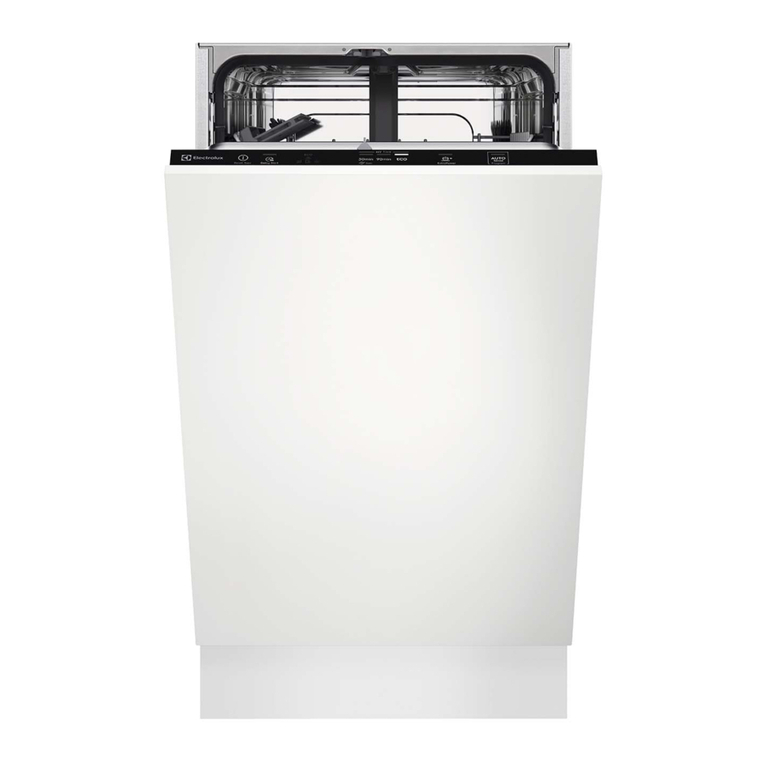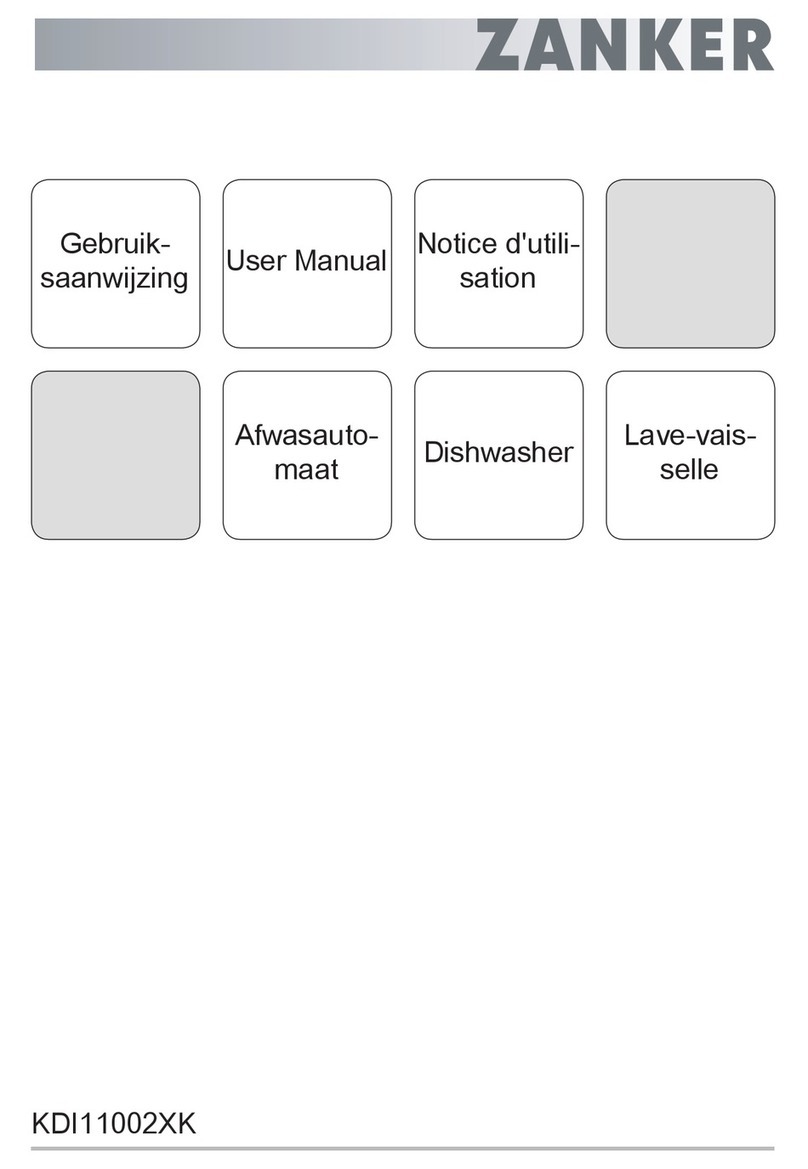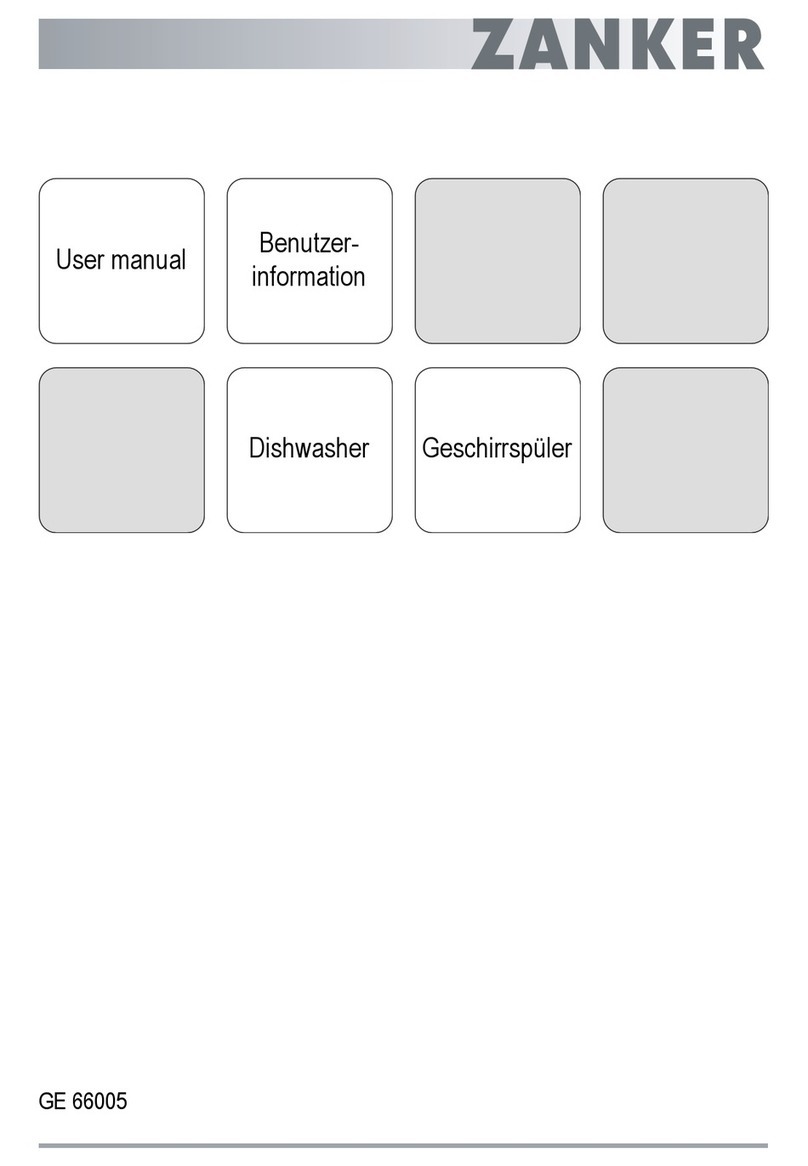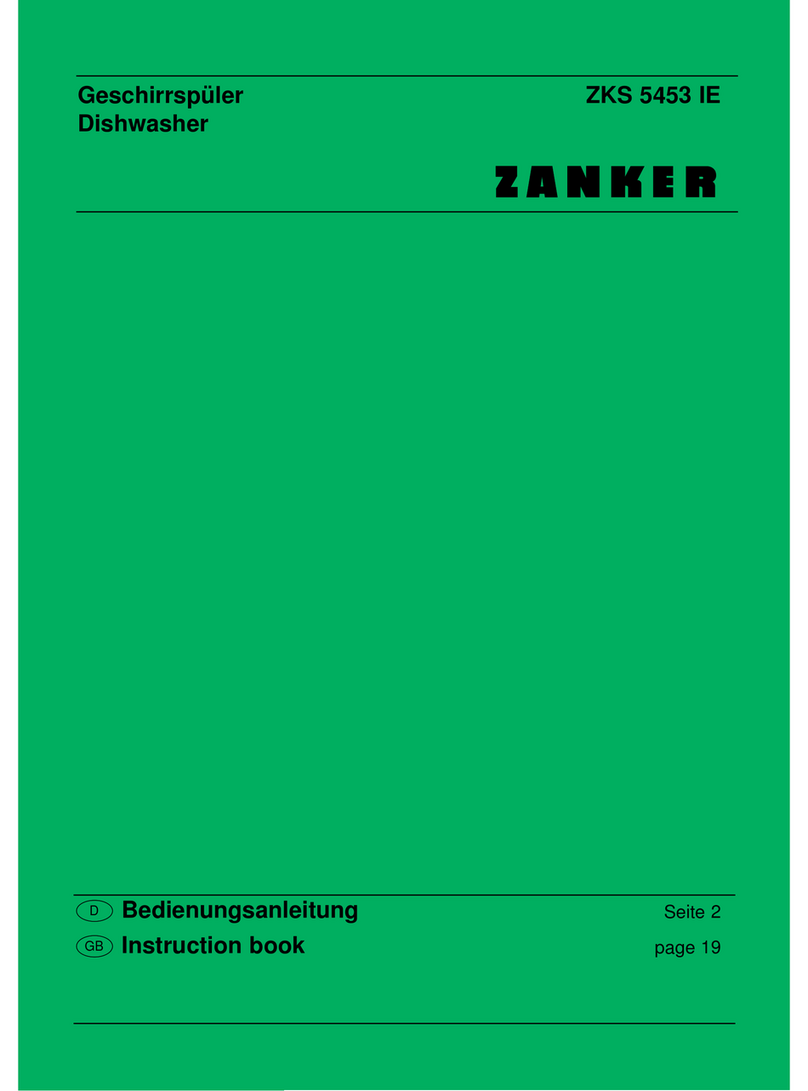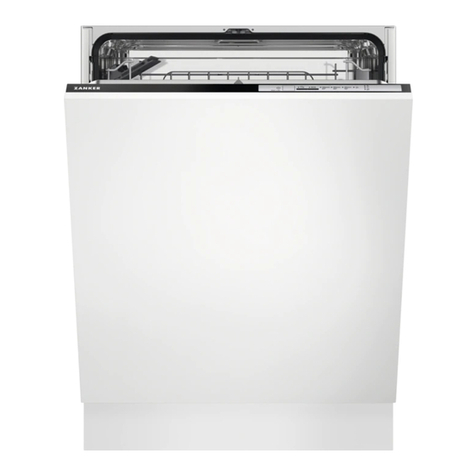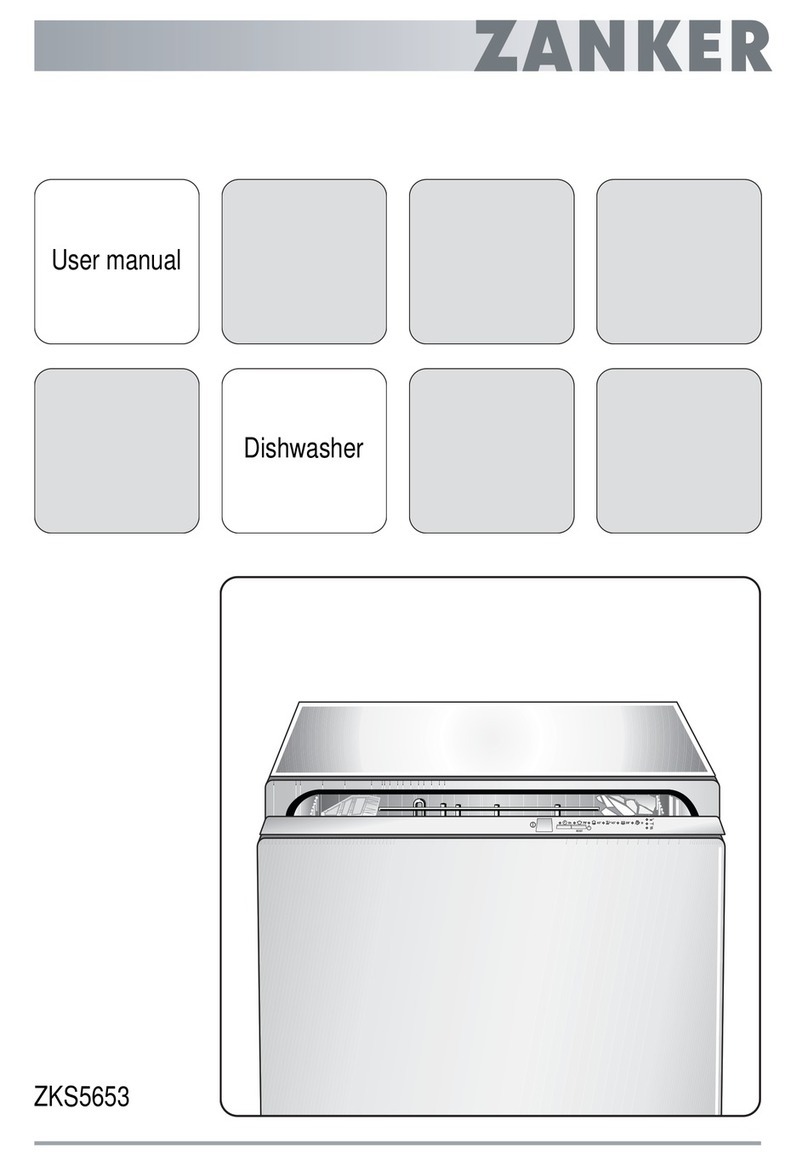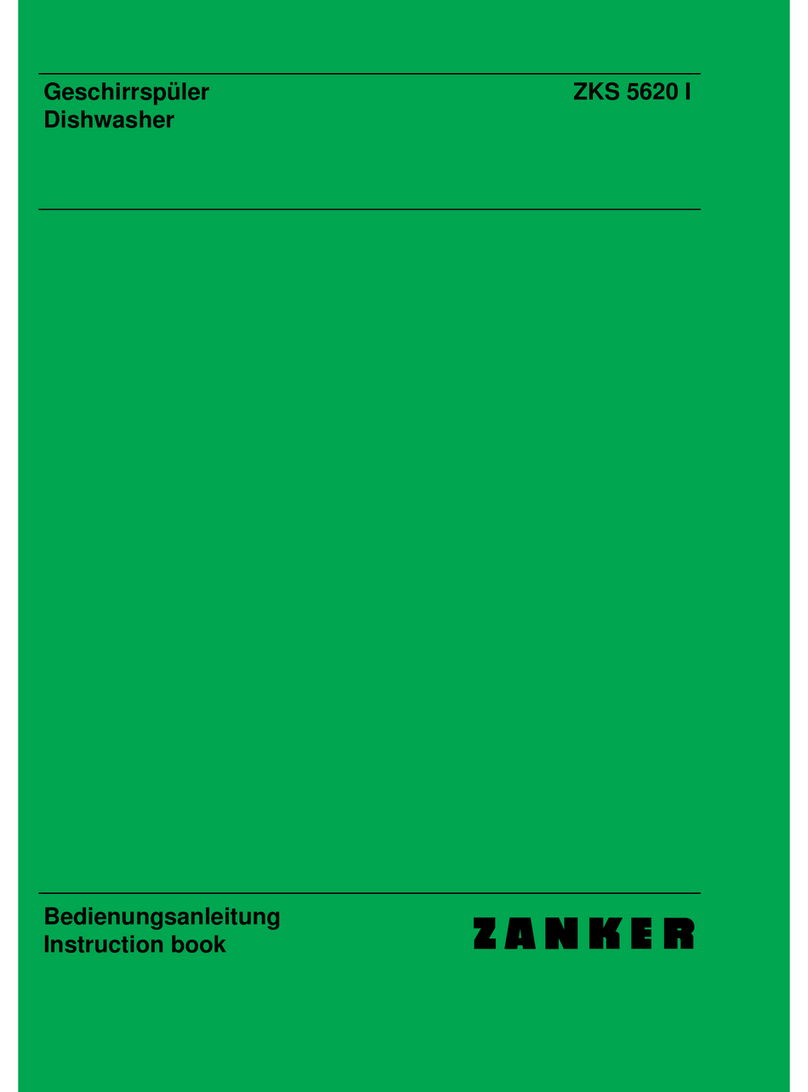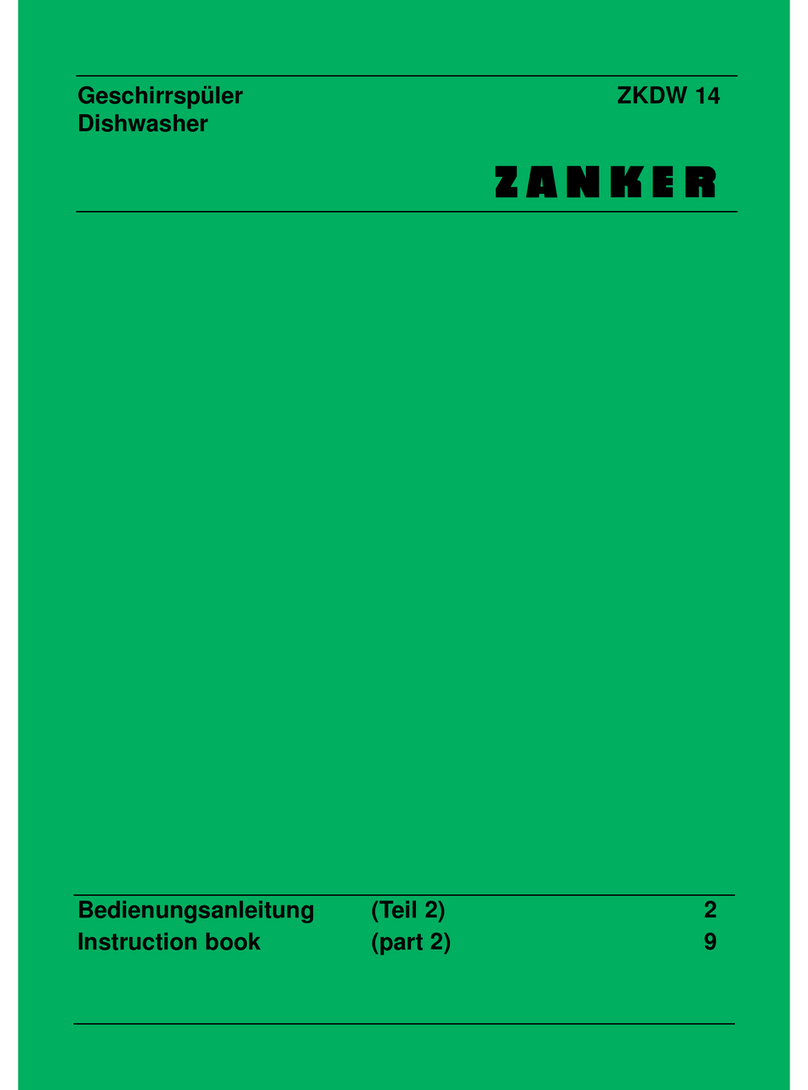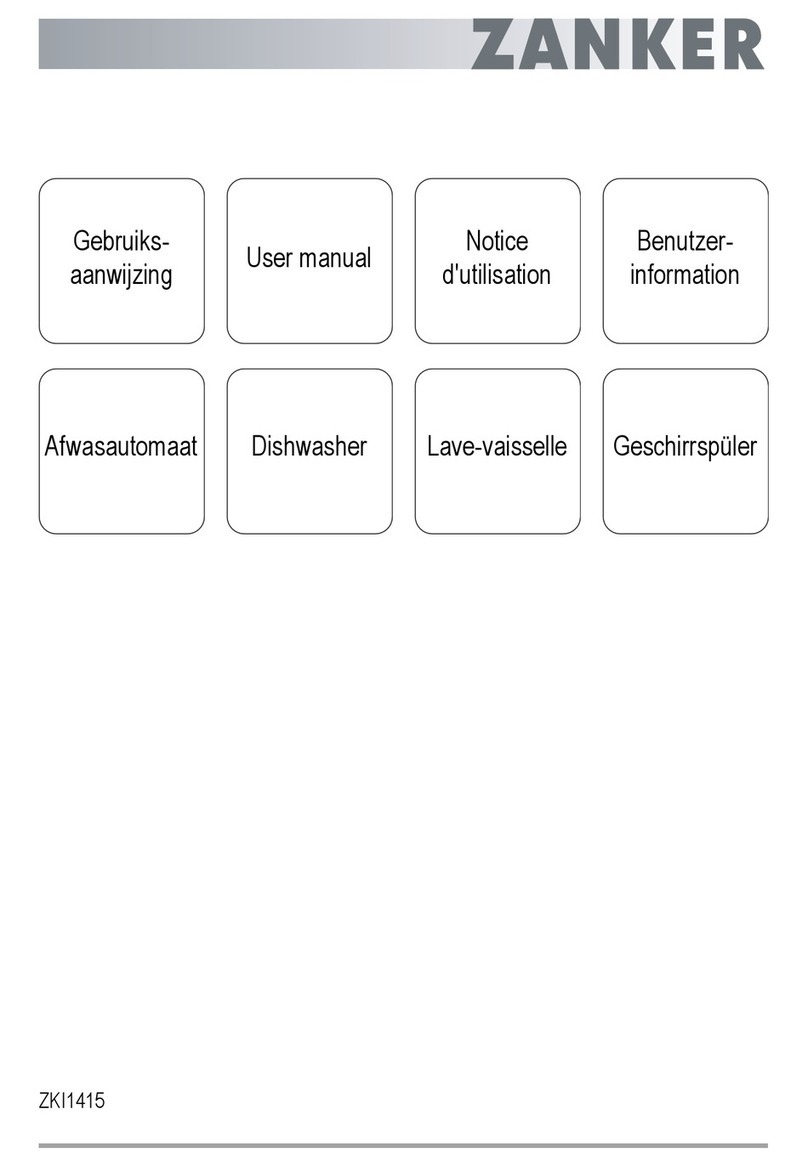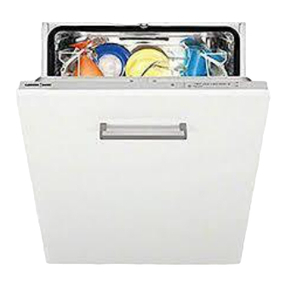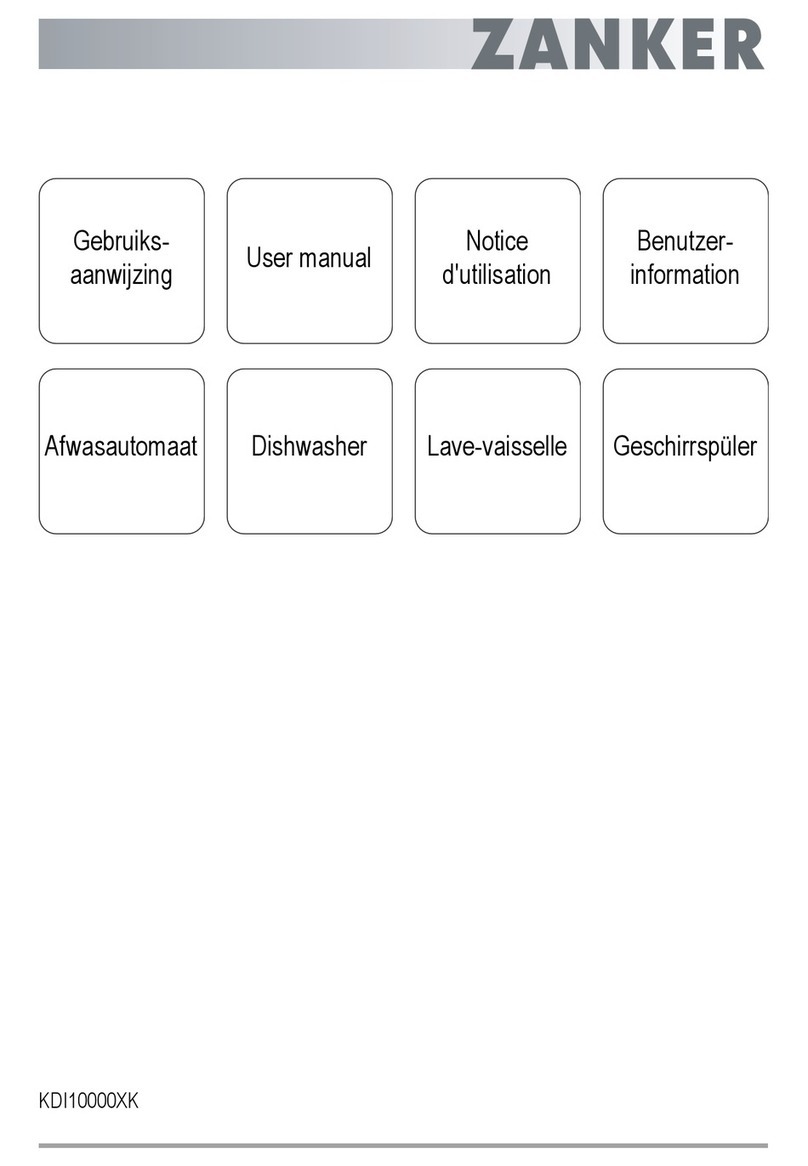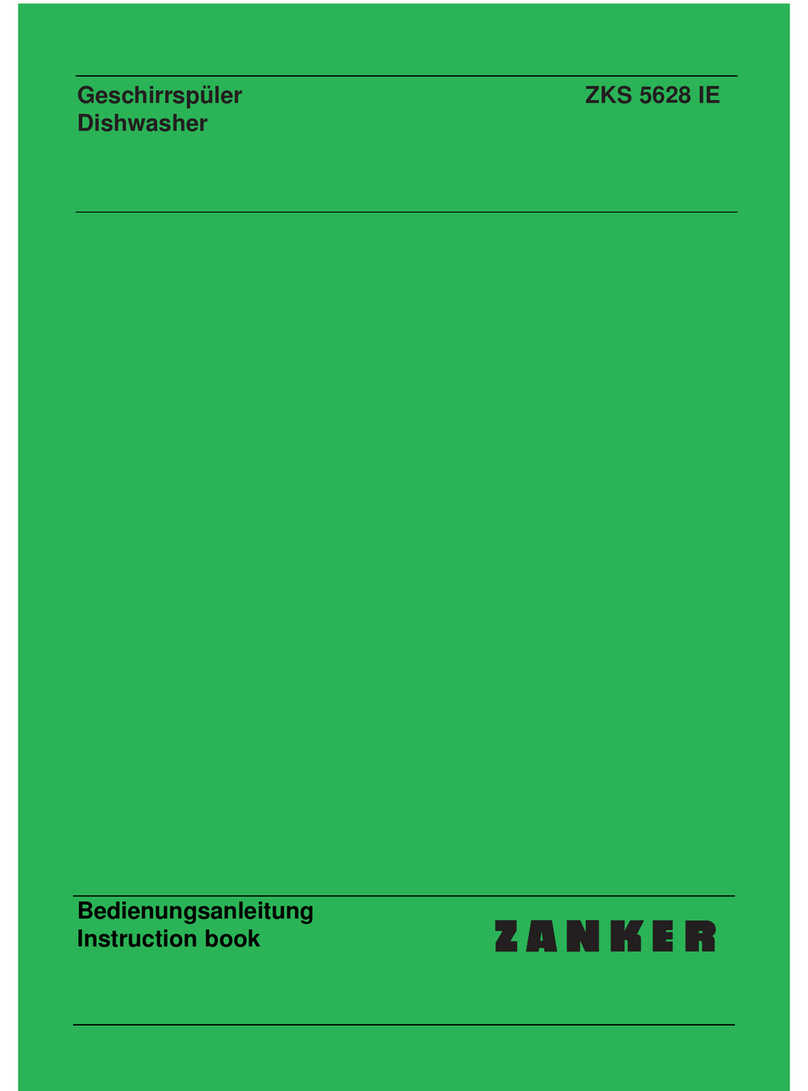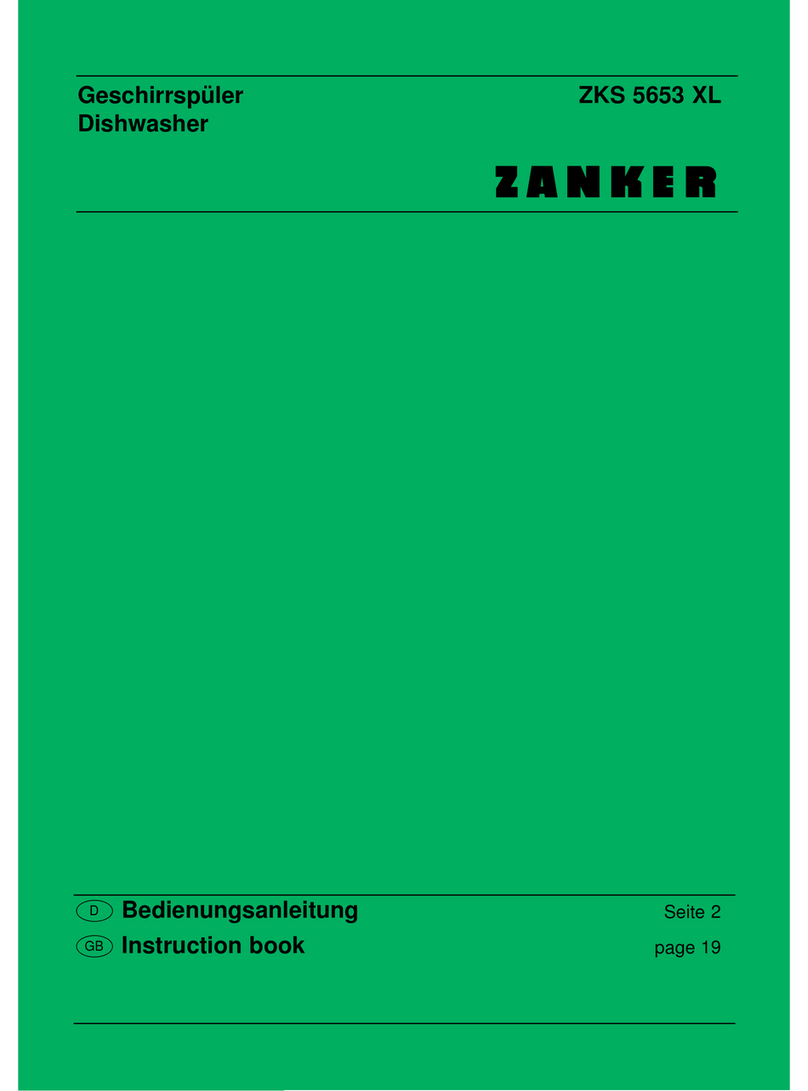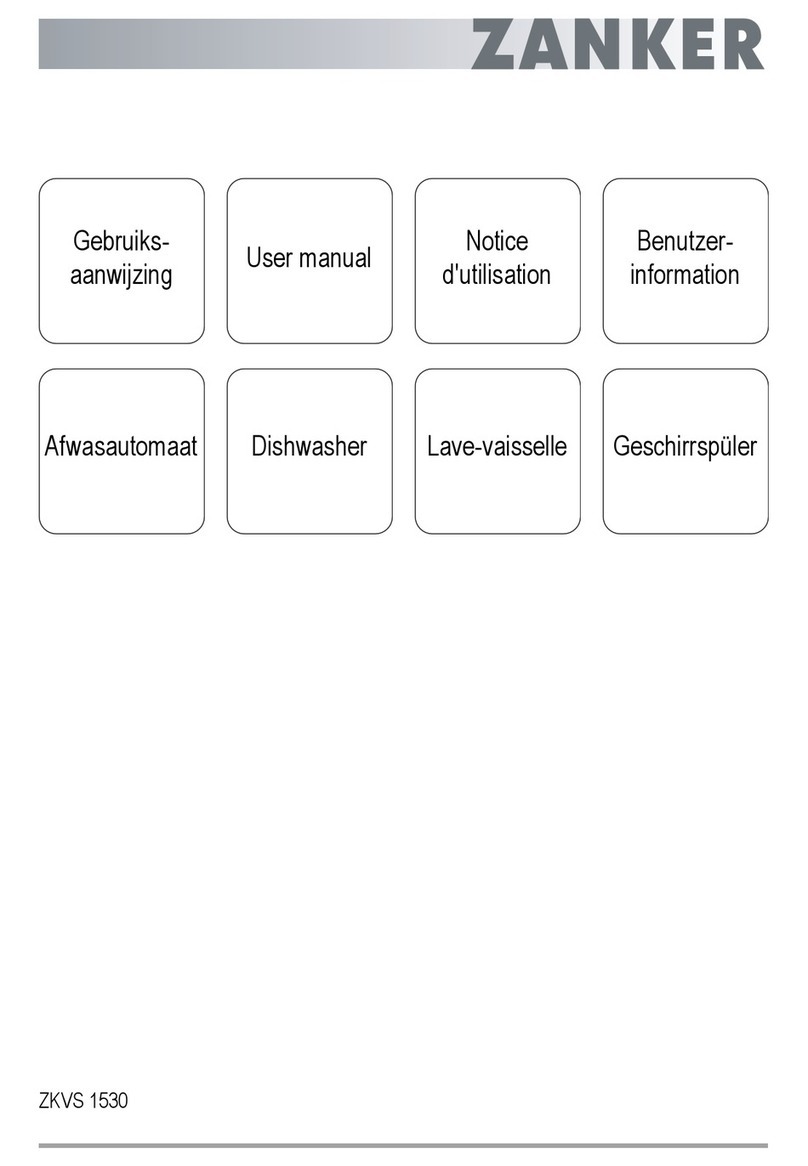The water softener
Water contains varying amounts of lime and mineral
salts depending on the area in which you live: these
are deposited on the dishes leaving white marks.
The higher the content of these salts, the harder your
water will be. The «hardness» level is measured on 3
equivalent scales: French Degrees, German Degrees
or Parts Per Million.
This appliance is supplied with a test strip «Aqua
test» so that you can test the water hardness up to
22°dH.
With water hardness beyond 22°dH ask the exact wa-
ter hardness degree to the local Water Authority.
The dishwasher is equipped with a softener which uses
special dishwasher salt to provide lime-free (softened)
water. The softener can treat water hardness up to 50
German degrees via 9 adjustment levels.
Find on the table below the level corresponding to the
hardness of your water and the required adjustments:
*The water softener is factory set at level 4 as this suits most users.
To set the dishwasher to a different level, proceed as
follows:
- Press the ON/OFF button to turn the dishwasher on.
- Press the “Half Load” and “Delayed start”
simultaneously for about 5 seconds until the short
«instruction accepted» signal is heard; an “L” followed
by number 4 (the hardness level set in factory) will
appear in the digital display.
- Press the “Half load” button as many times as
necessary to make the required level appear in the
display. The level increases by 1 each time the
button is pressed.
- 5 seconds after this button has last been pressed,
the machine returns to programme setting mode
and memorises the level set.
Important
Salt MUST be used regularly from level 1 upward.
If your water is «level 0» it is already soft and therefore
there is no need to use salt.
Filling with Salt
Only use salt designed specifically for use in dish-
washers. Other types of salt i.e.: table/cooking salt
contain high percentages of other substances which
may reduce the efficiency of the softener. To fill with
salt, unscrew the cap of the salt container.
Pour about half a litre of water inside the container, or
until it is full (this is necessary only before filling with
salt for the first time).
Then, using the funnel pro-
vided, pour in the salt until
the container is full (approx.
1,5÷1,8 kg). Do not worry if
water over flows from the
unit when filling with salt this
is quite normal.
Replace the cap making sure that there is no trace of
salt on the screw thread or on the gasket.
Screw the cap on tightly.
If you have inadvertently spilled salt select a wash
programme immediately after.
All that is then required is to periodically top up the
container with salt. You are reminded of this by the
«salt indicator light»; on the control panel illuminates
when the salt has finished.
The salt container always has some water inside
which will normally overflow when refilling with salt.
Important: The «salt indicator light» on the control
panel can remain illuminated for 2-6 hours after the
salt has been replenished, assuring the dishwasher
remains switched on. If you are using salts that take
longer to dissolve then this can take longer. The func-
tion of the dishwasher is not affected.
Caution: Only fill with salt just before starting one of
the complete washing programmes (not the Rinse
and Hold programme). This will prevent any grains of
salt or salty water, which may have been spilled,
remaining on the bottom of the machine for any period
of time. This could cause corrosion.
PAA24GB
25
Level French Degrees
(°TH) German Degrees
(°dH) ppm
(Parts per Million)
0
1
2
3
*4
5
6
7
8
9
0- 4
5- 8
9-11
12-17
18-22
23-28
29-33
34-39
40-45
46-50
0- 8
9-14
15-20
21-30
31-40
41-50
51-60
61-70
71-80
81-90
0- 80
81-140
141-200
201-300
301-400
401-500
501-600
601-700
701-800
801-900
SO197
SALE
SALT
SALZ
SEL
SR06
